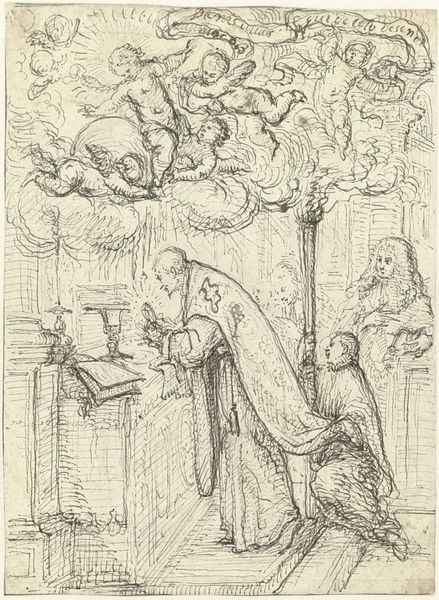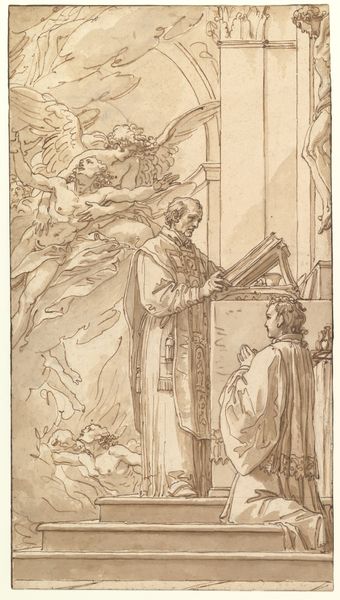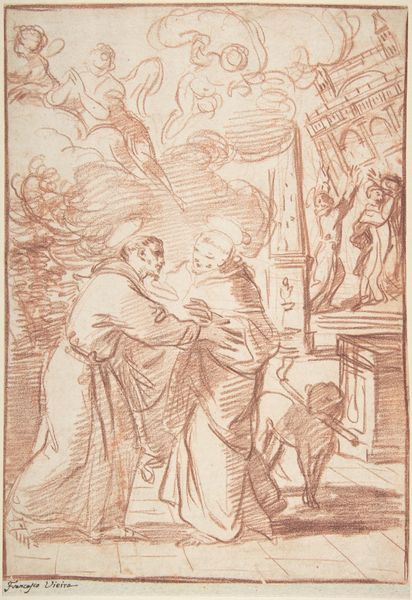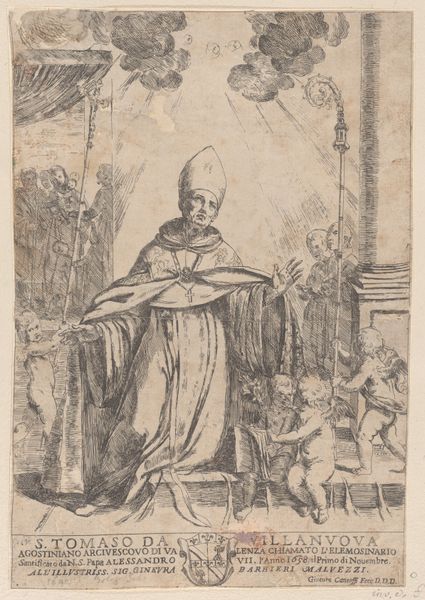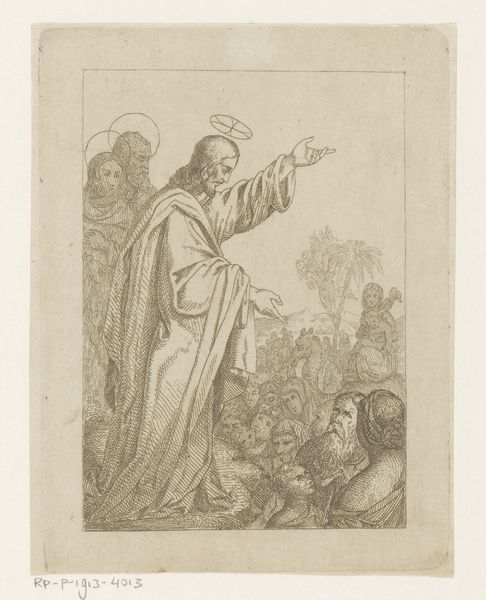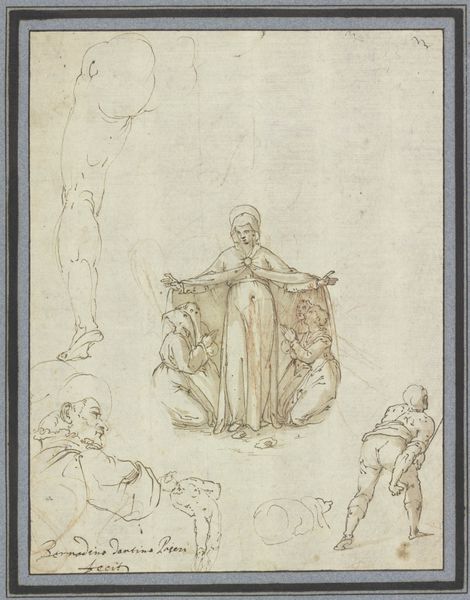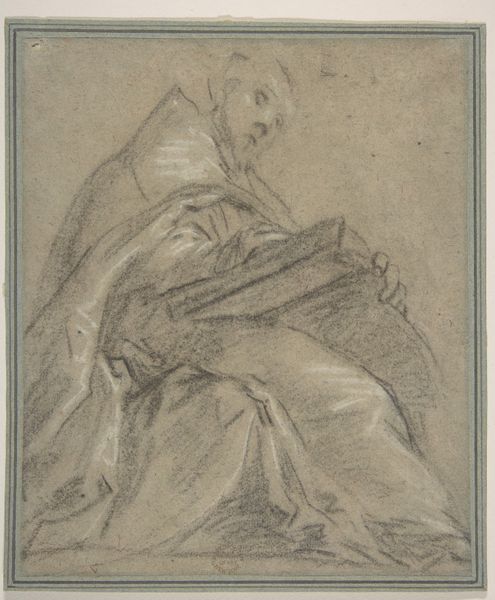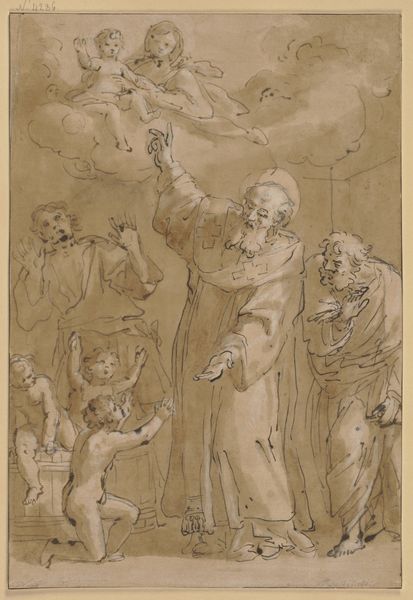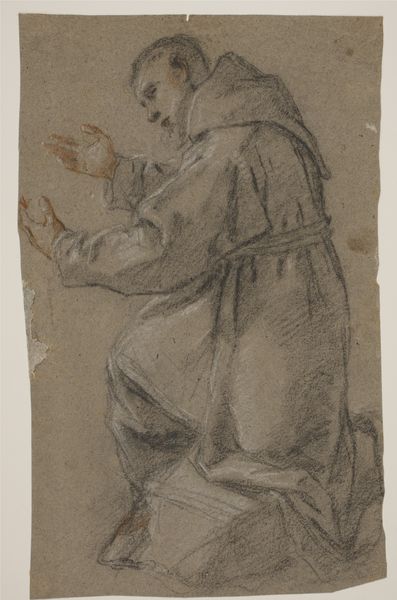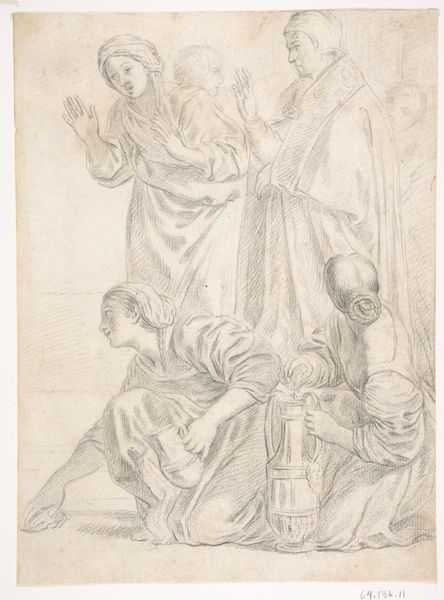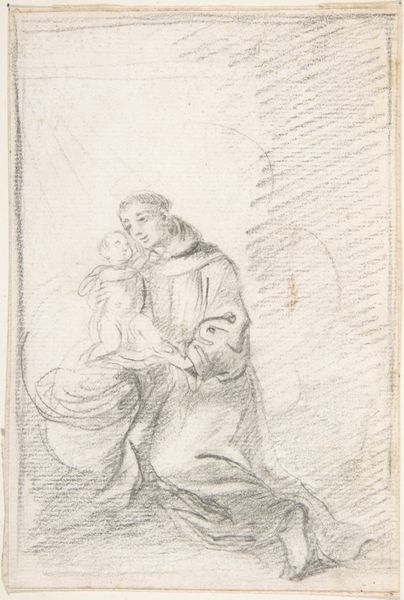
drawing, paper
#
portrait
#
drawing
#
baroque
#
figuration
#
paper
#
history-painting
#
italian-renaissance
#
italian
Copyright: Public Domain
Editor: This drawing, "Betender Heiliger vor einem Altar von Engeln gekr\u00f6nt," or "Praying Saint Crowned by Angels Before an Altar," is by Guido Reni, though the date is unknown. It's a red chalk drawing on paper, and I’m struck by its devotional intensity, but also the way power dynamics seem to be embedded within the composition. What do you see in this piece? Curator: I see a visual manifestation of the socio-political dynamics inherent in religious devotion during the Baroque period. The Saint kneels, framed by both earthly figures and celestial beings, suggesting a hierarchical structure endorsed by the Church. Note how Reni employs the iconography of angelic crowning. Consider this not simply as a symbol of divine favour but as a visualization of the Church's role in legitimizing power and shaping social order. The artistic patronage of the church played a key role. How might gender be operating within this artistic and historical moment? Editor: I hadn't really considered it in terms of power! It seems obvious now. Is the presence of angels a statement on this legitimization or endorsement? And how might gender roles come into play here? Curator: Precisely. The angels, often depicted with softer features, attend to a male saint. In what ways does this dynamic echo, reinforce, or even challenge societal expectations about gender roles, particularly the active/passive dichotomy assigned to men and women during that period? Could it reflect the power dynamics of religious institutions where men historically held positions of authority? Editor: So the image, at first glance, seems solely spiritual but it is deeply rooted in historical and societal power structures. This adds an interesting layer to how the piece is interpreted. Curator: Absolutely. Recognizing the intricate web of religious practice, social hierarchy, and gendered performance enriches our understanding and challenges the notion of art existing in a vacuum. Thank you for prompting these thoughts!
Comments
No comments
Be the first to comment and join the conversation on the ultimate creative platform.
